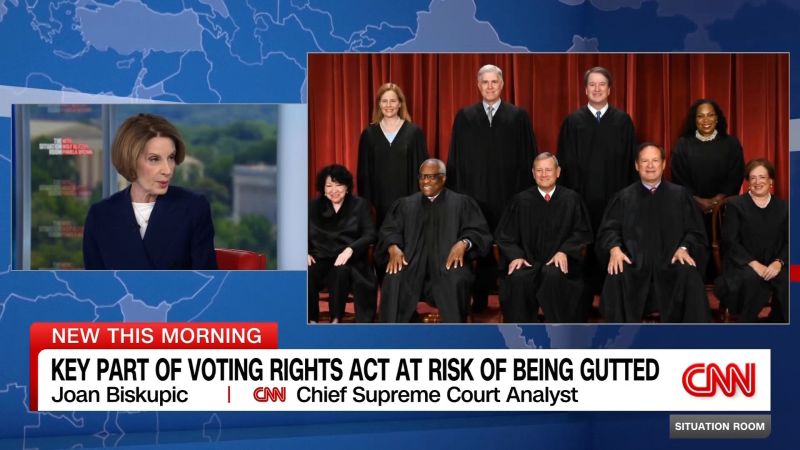Justice Clarence Thomas has initiated a significant challenge to a vital aspect of the Voting Rights Act, raising questions about the future of this landmark legislation. During a discussion on CNN, legal analyst Joan Biskupic spoke with host Wolf Blitzer about Thomas’s ambitions to reshape voting rights in the United States and the potential alignment of other conservative justices in this effort.
Potential Changes to Voting Rights
The Voting Rights Act, originally passed in 1965, was designed to eliminate racial discrimination in voting. As the Supreme Court prepares for its next session, the focus is on whether Thomas’s conservative colleagues will support his views aimed at rolling back protections established under this act. The implications of such a decision could affect millions of voters, particularly in marginalized communities.
Thomas has long been a proponent of revisiting voting legislation, arguing that certain provisions are outdated or no longer necessary. His recent remarks suggest a desire to dismantle key protections that have been in place for decades. This push to amend the act could significantly alter the landscape of voting rights across the country.
Impacts of the Supreme Court’s Decisions
The Supreme Court’s decisions can have profound impacts on American society. Should Thomas’s vision gain traction among his fellow justices, it could lead to a broader reevaluation of voting rights protections. Many observers are closely monitoring whether justices who have historically aligned with him will join this cause.
As the debate unfolds, the consequences for voters could be substantial. A reduction in the protections afforded by the Voting Rights Act could result in increased barriers to voting for vulnerable populations, exacerbating existing inequalities in the electoral process.
Legal experts and advocacy groups are concerned about the potential ramifications of such a shift. Without the safeguards provided by the act, many fear that discrimination in voting could resurface, undermining the progress made over the past decades.
Biskupic’s insights highlight the urgency of this discussion, as the Supreme Court’s next steps could set the stage for significant changes in U.S. voting rights legislation. The outcome of this challenge could resonate far beyond the courtroom, impacting civic engagement and representation for years to come.
As the Supreme Court prepares to hear cases in the upcoming session, the implications of Thomas’s challenge remain a pivotal issue for lawmakers and citizens alike. This situation demands close attention as the court’s decisions will likely influence the electoral landscape leading into the 2024 elections.
